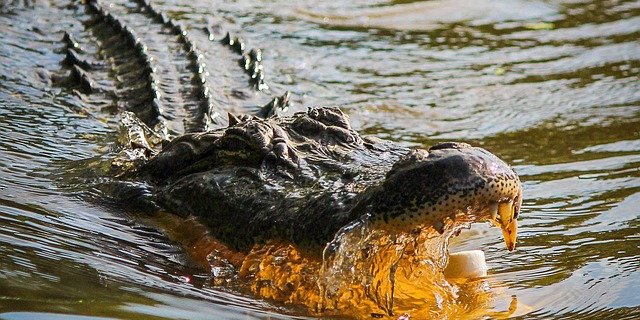The hunting of alligators has long been a tradition in the Southeastern parts of the United States. For generations those living in this part of the U.S. have engaged in the pastime for a variety of reasons, including hunting for food and as a business venture revolving around the sale of alligator skins which still to this day command high prices.
In fact the sale of alligator skins for use in clothing and fashion products has been prevalent since the 1800’s in the United States. These skins are used for belts, shoes and even high end saddles. Other fashion items can include handbags and wallets.
Today the hunting of alligators is strictly controlled and those hunting require permits and are limited to how many alligators they can take during the hunting season.
The reason for the new regulations is that unlimited hunting led to a dramatic decrease in alligator populations and by 1973 the species was listed as endangered. The regulations that were set in place have now seen populations bounce back from historical lows.
There are a number of ways that this hunting now takes place and a variety of methods that are used to capture and kill the alligators. By far the most popular among these methods, especially for those who hunt alligators as a way to make a living is through the use of a hook and line. The high tensile strength line with a large baited hook is attached to a tree or pole and baited with either a chicken carcass or fish (other baits may also be used).
This baited line is then left (usually overnight). If an alligator takes the bait and hook the hunter will then reel it in a kill it using a firearm. In some states the alligator must have been captured using this and other methods before being killed. The usual firearm is a rifle – however some hunters prefer to use what is called a ‘bangstick’. this is usually a shotgun cartridge at the end of a pole which fires when it comes into contact with the Alligator.
The hunting of alligators for profit from meat and skin has declined in recent years due to the number of alligator farms that have been established. These farms now supply the majority of skins used in fashion and clothing, as well as supplying the restaurant trade with alligator meat which has become increasingly popular with diners. The farmed alligator trade is now worth well in excess of $60m.
However, many of the traditional hunters have now turned to the tourist trade and hunters to earn a living. There are a number of operators who now offer high end tours for those who wish to enjoy the thrills of an alligator hunt. These packages can include all catering, the hunt itself and accommodation.
It seems that although traditional alligator hunting is steadily decreasing the sport of alligator hunting is increasing. This is a pastime that will not be disappearing anytime soon.








